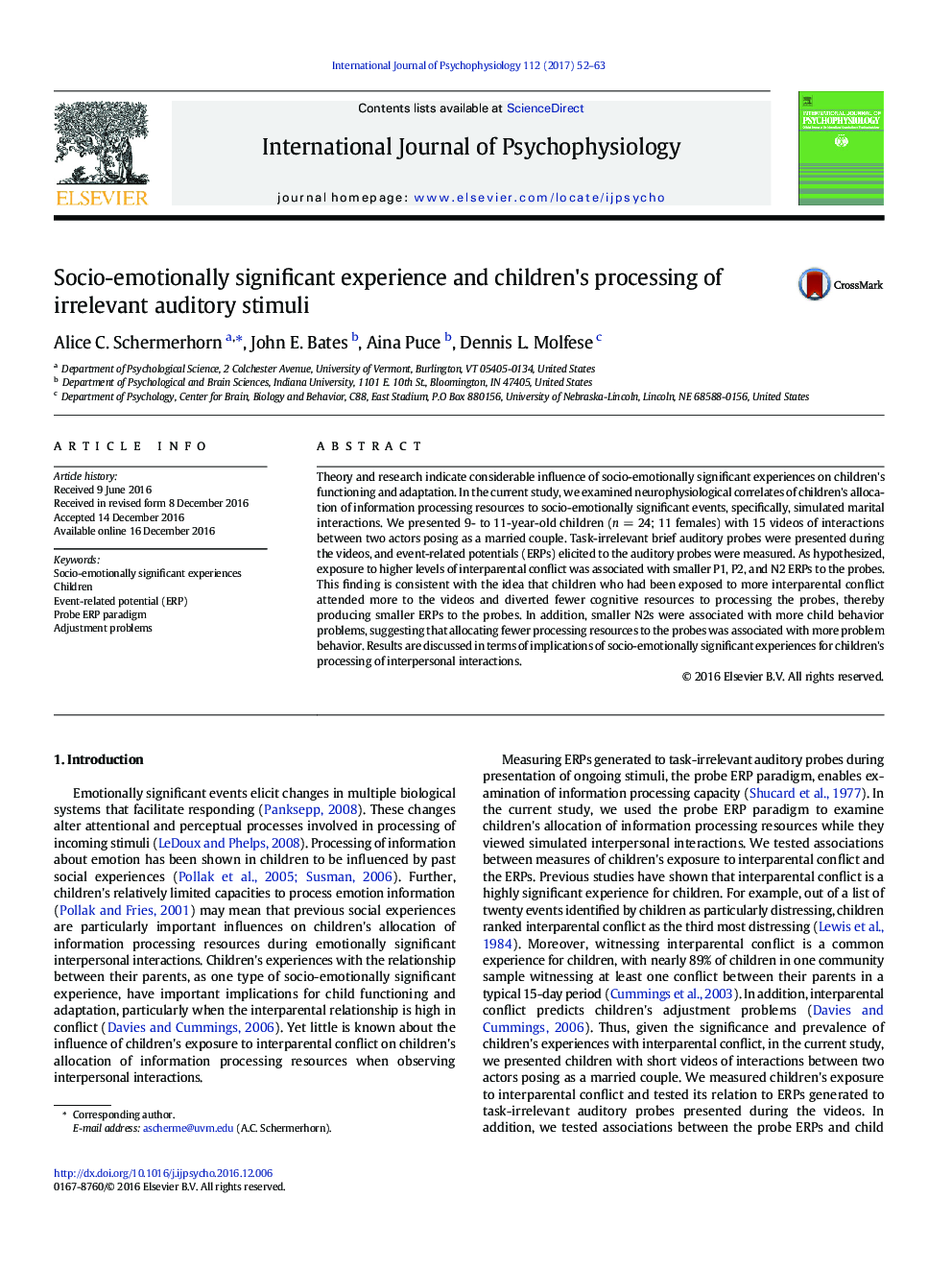| Article ID | Journal | Published Year | Pages | File Type |
|---|---|---|---|---|
| 5042346 | International Journal of Psychophysiology | 2017 | 12 Pages |
â¢Associations between ERPs and child exposure to interparental conflict were tested.â¢Associations of ERPs with child psychological adjustment were also tested.â¢A probe ERP paradigm with simulated interparental conflict stimuli was used.â¢Interparental conflict was associated with smaller P1, P2, and N2 ERPs to probes.â¢In addition, smaller N2s were associated with more child behavior problems.
Theory and research indicate considerable influence of socio-emotionally significant experiences on children's functioning and adaptation. In the current study, we examined neurophysiological correlates of children's allocation of information processing resources to socio-emotionally significant events, specifically, simulated marital interactions. We presented 9- to 11-year-old children (n = 24; 11 females) with 15 videos of interactions between two actors posing as a married couple. Task-irrelevant brief auditory probes were presented during the videos, and event-related potentials (ERPs) elicited to the auditory probes were measured. As hypothesized, exposure to higher levels of interparental conflict was associated with smaller P1, P2, and N2 ERPs to the probes. This finding is consistent with the idea that children who had been exposed to more interparental conflict attended more to the videos and diverted fewer cognitive resources to processing the probes, thereby producing smaller ERPs to the probes. In addition, smaller N2s were associated with more child behavior problems, suggesting that allocating fewer processing resources to the probes was associated with more problem behavior. Results are discussed in terms of implications of socio-emotionally significant experiences for children's processing of interpersonal interactions.
